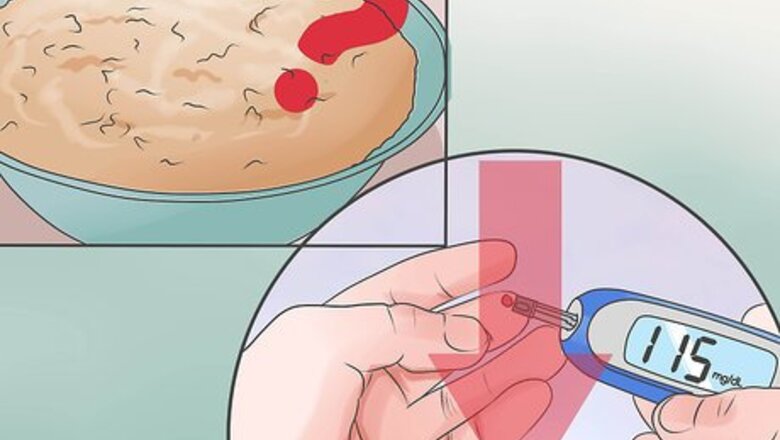
views
X
Research source
but doing the oatmeal diet can also act as an appetite control method, as oatmeal has been shown to increase your appetite control hormones.[2]
X
Research source
If you are trying to lose weight or create a diabetes-friendly diet, meals structured around oatmeal, combined with maintaining a healthy lifestyle through exercise and healthy habits, may be a viable option for you.
Understanding the Benefits of the Oatmeal Diet
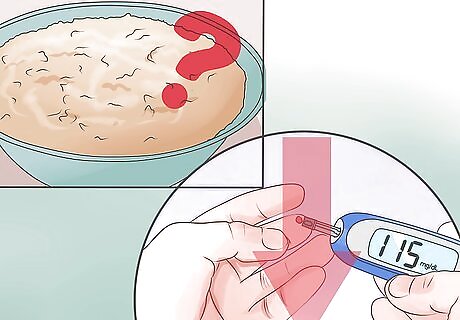
Be aware of how the oatmeal diet works. The oatmeal diet was originally developed by Dr. Carl von Noorden as a way to treat certain cases of diabetes. In von Noodren’s version of the diet, the patient consumes 250 grams of oatmeal, 250 – 300 grams of butter and 100 grams of a vegetable albumin, which is protein derived from plants, or six to eight egg whites. The patient cooks the oatmeal with water for two hours and then stirs in the butter and egg whites when the oatmeal is done. This diet is followed for one to two weeks and then the patient is allowed to return to their normal diet gradually. Remember that this diet was developed in 1903 — over a century ago. We know a lot more about nutrition and diabetes now, and following this diet could be very dangerous to your health and promote disordered eating. The modern oatmeal diet consists of three phases, where you start with plain oatmeal in skim milk for one week. In the second phase, you can add fruit to the oatmeal in the morning and vegetables to the oatmeal in the afternoon. In the third and final phase, you can gradually return to your normal diet. Phase one of this diet is considered extreme and is not recommended. If you would like to use the oatmeal diet to lose weight, you should make sure you are having other healthy meals along with oatmeal and that you are maintaining a healthy lifestyle. This will ensure your body is reaping the benefits of oatmeal and will not put you at risk of other health issues while on the oatmeal diet.

Talk to your doctor first. While oatmeal is known as a healthy food option, it should be eaten in moderation, just like anything else. The oatmeal diet is an extremely restrictive, very low-calorie diet and doesn't provide all the nutrients you need from other foods. If you are interested in this diet, you must speak with your doctor or a registered dietitian first. This will ensure your body is reaping the benefits of oatmeal and will not put you at risk of other health issues while on the oatmeal diet. Keep in mind a restrictive diet like the oatmeal diet is not sustainable for long-term weight loss. As soon as you return to eating the way you did before, you will gain the weight right back.

Understand the health benefits of oatmeal. The oatmeal diet is structured around the known health benefits of oatmeal, which include: Lower cholesterol levels Reduced blood pressure levels Boosting your immune system to fight off bacteria, fungi, viruses, and parasites Helping your body to remove waste A reduced risk of type 2 diabetes An improved sensitivity to insulin An increase in appetite-control hormones
Adding Oatmeal to Your Diet
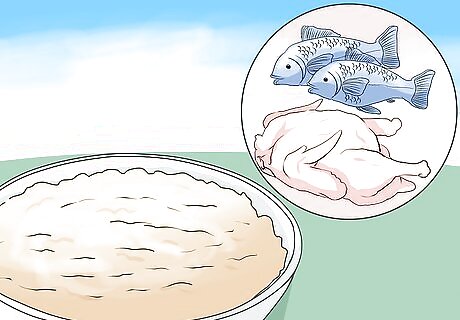
Balance your oatmeal consumption with other healthy meals. A diet consisting only of oatmeal (even with some added fruits and vegetables) is not considered a healthy, safe, or sustainable diet and you will need to eat other, healthy meals as well. To ensure your body is getting enough nutrients, consider eating oatmeal with fruit in the morning and then have a healthy lunch that consists of a protein (animal-based, like chicken or fish, or plant based, like tofu), a grain (quinoa, brown rice), and leafy green vegetables. You could then finish your day with a dinner of oatmeal with vegetables.
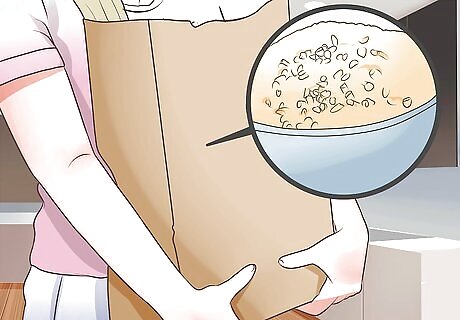
Go shopping for supplies before you start the diet. Before you embark on the oatmeal diet, you should make a shopping list of ingredients you will need to start your diet. Consider steel cut oats, rather than rolled or instant oats. Though they will take longer to cook than rolled or instant oats, steel cut oats have a creamy texture that will make your bowls of oatmeal taste delicious and filling. Instant oat packages often have added sugar, so avoid these if possible. Choose skim milk over whole milk. Skim milk will provide creaminess for the oatmeal without adding too much fat. The milk will also help you maintain a healthy calcium level throughout the diet. You can also substitute the milk with egg whites and butter to vary the flavor, though the skim milk has more nutritional value. Buy fruits and green vegetables to put into the oatmeal. These could be berries, such as strawberries, blueberries, or blackberries, and green vegetables like kale, broccoli, and spinach.
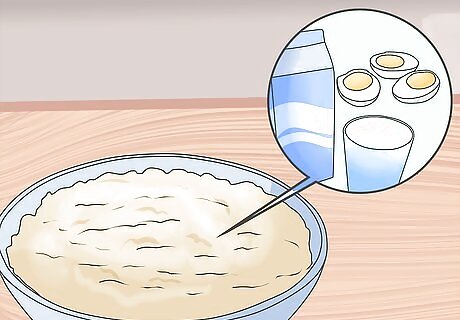
Start with plain oatmeal in milk or with egg whites. For the first week of the diet, you should prepare basic oatmeal in skim milk or with egg whites and butter. The egg whites will ensure you get enough protein with your oatmeal. To prepare oatmeal in skim milk with steel cut oats, boil 1 cup skim milk and add ¼ cup oats. If you’re using rolled oats, boil 1 cup milk and add ½ cup oats. Let the oats cook for 20 – 30 minutes on simmer, stirring them occasionally. The longer the oats cook, the softer they will be. To prepare oatmeal with egg whites and butter, boil 1 cup water and add ¼ cup steel cut oats or ½ cup rolled oats. Let the oats cook for one hour and then add 250 grams of butter and 100 grams of egg whites (about ½ cup) once the oatmeal is done cooking. You can also add a dash of salt.
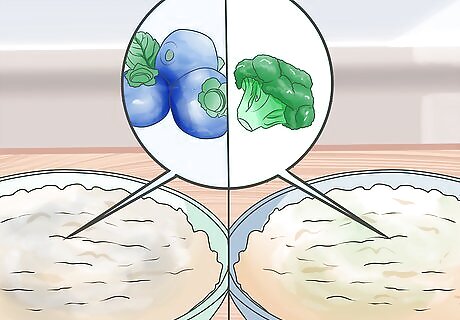
Add fruit to the oatmeal in the morning and green vegetables at night. After one week of oatmeal with milk or egg whites, you can add fruit and vegetables to your oatmeal. Add ¼ cup of berries like blueberries, blackberries, raspberries, and strawberries to your oatmeal in the morning to break up the monotony of plain oatmeal and to give your body some much needed natural sugars and fiber. You can then add ½ cup of steamed vegetables, like kale, spinach, or broccoli, to your oatmeal at night. This will provide nutrients, vitamins, and minerals, and give you some variety for your dinner meal.

Return to your normal diet gradually. Once you feel the oatmeal diet has been beneficial, usually about two to three weeks from the start date, you can start to gradually return to your normal diet. Avoid diving right back into your normal diet, as this can lead to an increase in your blood sugar levels and can be harmful to your health, especially if you are diabetic. Cut out one oatmeal meal and replace it with one cup of broth, accompanied by steamed vegetables. The following day, replace one oatmeal meal with 1/2 cup of cooked chicken or beef and a small salad made of lettuce or spinach. Continue to replace one oatmeal meal with a 1/2 cup of solid foods like chicken, beef, potatoes, and one slice of bread for one week. After one week, you can reduce the oatmeal meal to once a day or once every other day.

Have one serving of oatmeal a day once the diet is done. Though you may be tired of oatmeal by the time you finish the oatmeal diet, you should try to still incorporate oatmeal into your daily breakfast meal. Starting your day with oatmeal and fruit, sweetened with honey, can provide enough fiber to get you through the morning. Oatmeal will also prevent you from getting hungry until it’s time for lunch.
Maintaining a Healthy Lifestyle
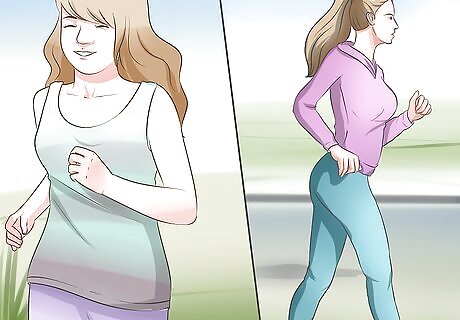
Exercise at least two to three times a week. To maintain a healthy lifestyle during the oatmeal diet, you should try to do at least 30 minutes of gentle exercise two to three times a week. This could be 30 minutes of walking or yoga. Doing weekly exercise will ensure you will lose weight in a healthy and sustainable way while on the oatmeal diet. Don't do anything too taxing or intense while on a very low-calorie diet.
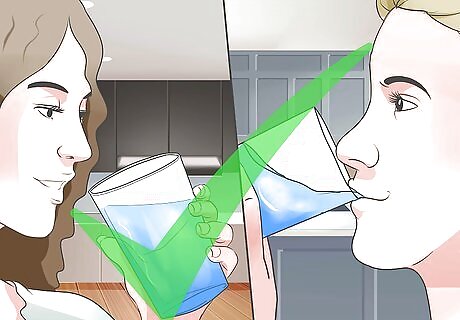
Drink lots of water. It is not recommended that you drink juice, soda, or alcohol during the oatmeal diet. Instead, you should focus on drinking at least one to two cups of water after you exercise and one to two cups of water during each meal and between each meal. Drinking water will help your body stay hydrated and ensure you are expelling any waste or toxins out of your body.

Consider stopping the diet if you feel weak, have low energy, or other health issues. If you feel weak or fatigued at any time during the oatmeal diet, you may not be getting enough nutrients and protein in your diet. You may decide to add more protein or a nutrient-rich meal to your diet or to add more vegetables or fruits to your oatmeal. If you have any health issues and are concerned about your health while on the oatmeal diet, you should consider stopping the diet and check in with your doctor. Your doctor can then determine if it is medically safe for you to continue on the oatmeal diet.




















Comments
0 comment